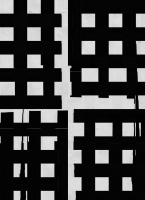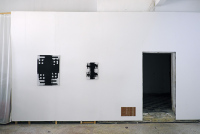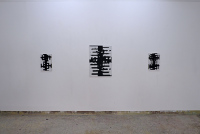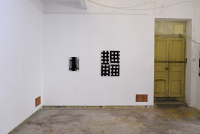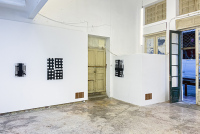-
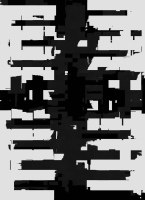
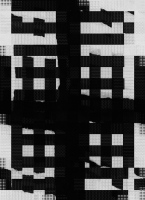
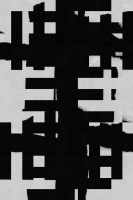
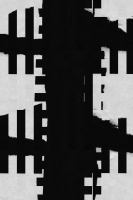
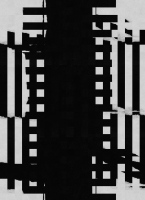
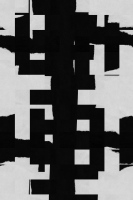
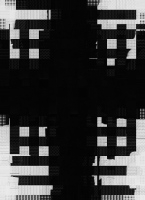
Alexis Vasilikos – Grids
17.03.2023 – 02.04.2023
curated by Maaike Stutterheim
Video documentation : https://youtu.be/Cuj5_AXDYlY
Towards a choreography of the grid
In his fourth solo exhibition entitled “Grids”, which takes place in PS:, Alexis Vasilikos creates a series of digital collages that explore the dynamic structure of the grid by focusing on the compact and at the same time variable structure of it. After his last solo exhibition at CAN Christina Androulidaki gallery in 2019, where he opened up a dialogue with abstract photography, he takes abstraction a step further towards a more minimalist imagery. He started producing this series of works in 2020, during the quarantine.
The featured works have complexity and intensity, and they are made after processing scanned pieces of paper, which are torn and then digitally processed. Alexis Vasilikos revisits the same archive material, and through persistent modifications, he creates grids that subordinate the same to difference; each entails a rupture and breakage of resemblance. It is a dynamic repetition of processing the same material, which is constantly changing. In her essay “Grids”, Rosalind Krauss published in 1979, underlines the importance of the visual structure of the grid. She states that “The bottom line of the grid is naked and determined materialism”, mentioning how this geometric form deals with materialism, and at the same time, it is a release into “belief, or illusion or fiction”.
The overlaying of layers is like a palimpsest, full of traces and fragments. And if some of them are partially erased buried, or difficult to see, they always leave an imprint that remains present next to the new recordings. Alexis Vasilikos notes, “These grids look like system errors of a printer, glitches or some kind of system disruptions".
These grids, through various formations and visual compositions, acquire plasticity. The correlation and the permeability of the different and intersecting levels dissolve the feeling of a single plane and create a sense of movement. The works placed on the walls interact with the structural elements of the neoclassical building, doors and windows, recalling Krauss' formulation that grids appear in 19th-century symbolist art in the form of windows. The viewer walking through the exhibition can see at the bottom of each wall the reverse side of the tiles, sparsely placed. We see the ceramic back side form grids to facilitate adhesion to the surface to be coated. The disarticulation of the strict geometric form of the grid is made through the multiplicity of the layers, by infusing them—the grids' limits confine, recalling this visual structure's materialism. However, at the same time, these limits are undone, and they become malleable, opening up limitless potentiality and provoking a constant flux of transformations while observing them.
Eva Galatsanou
